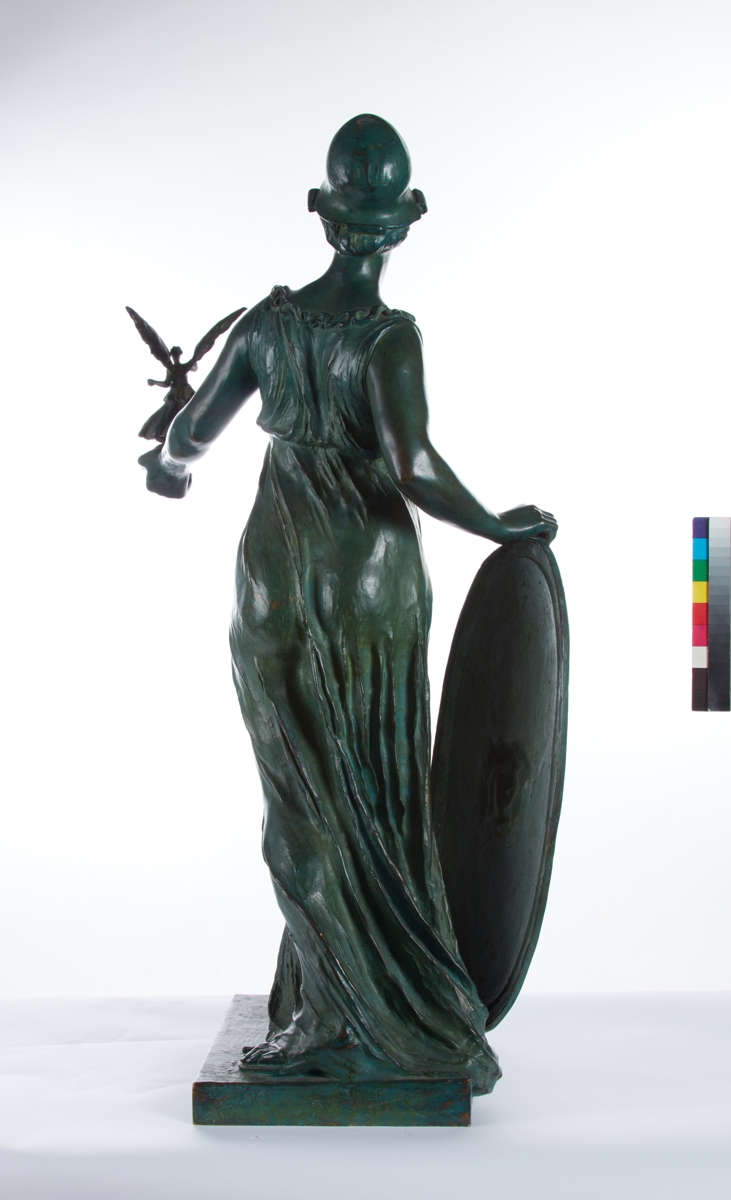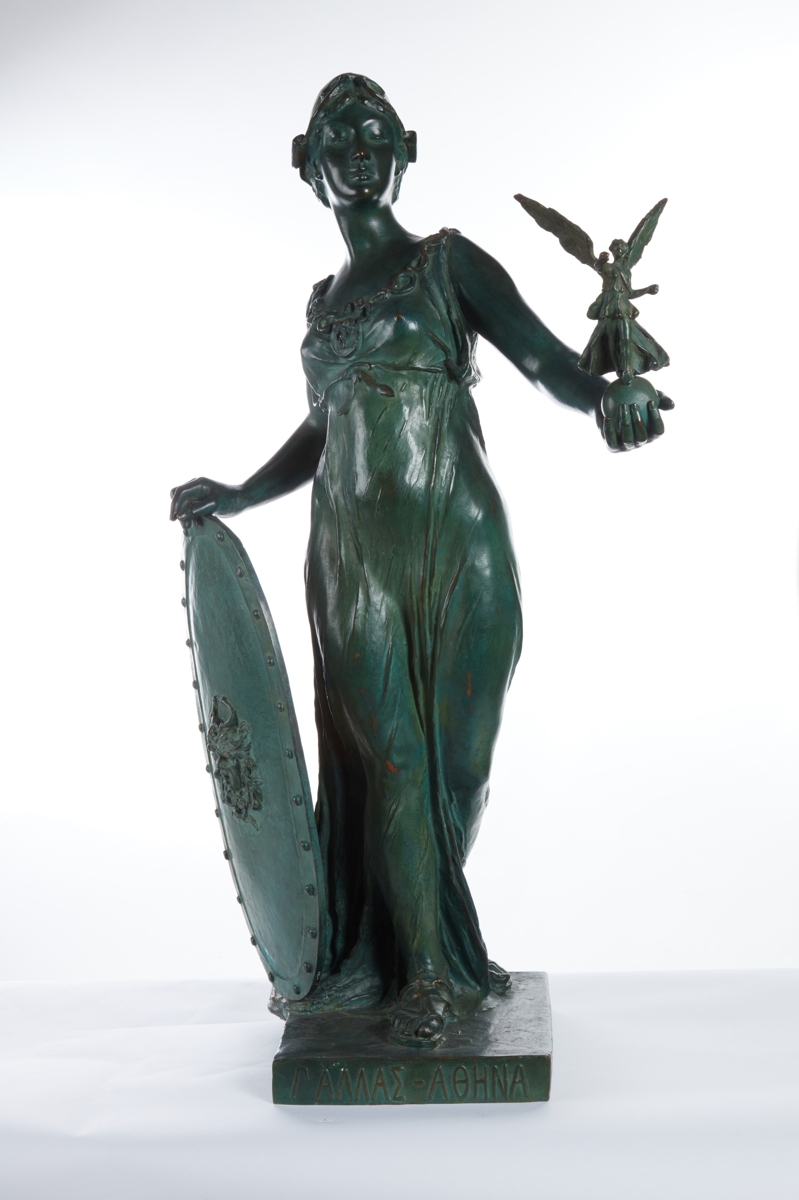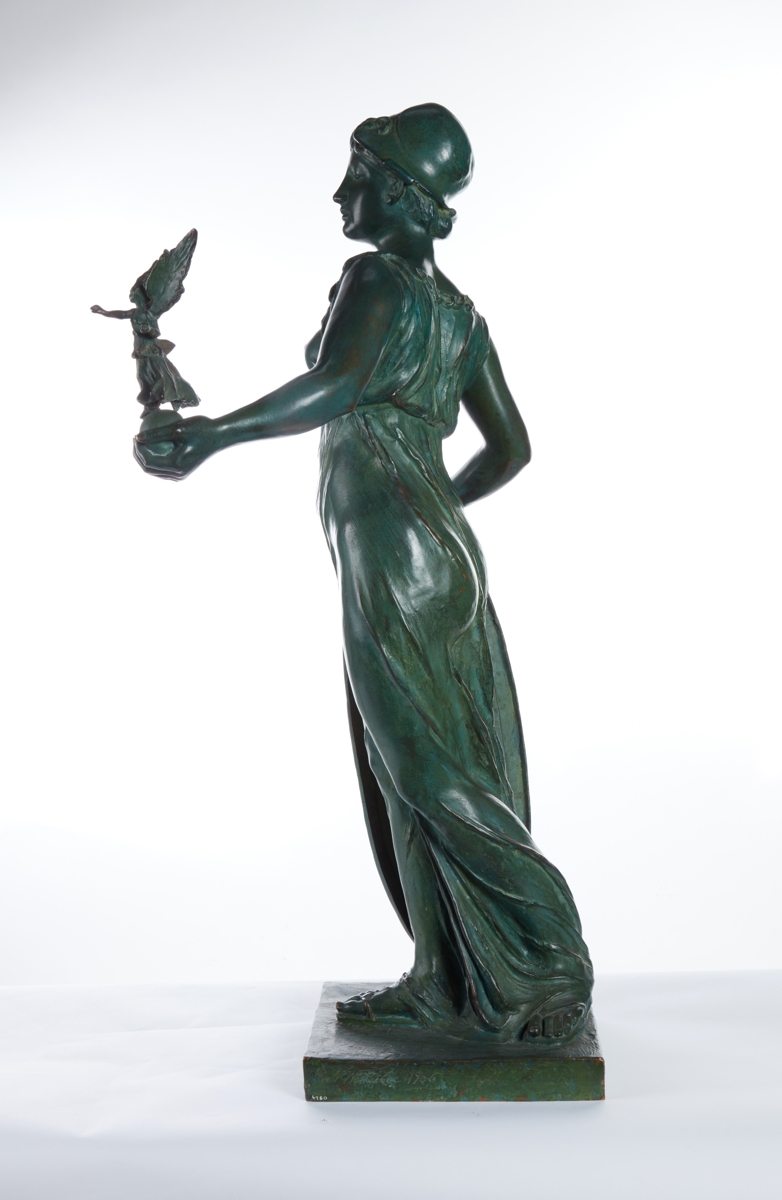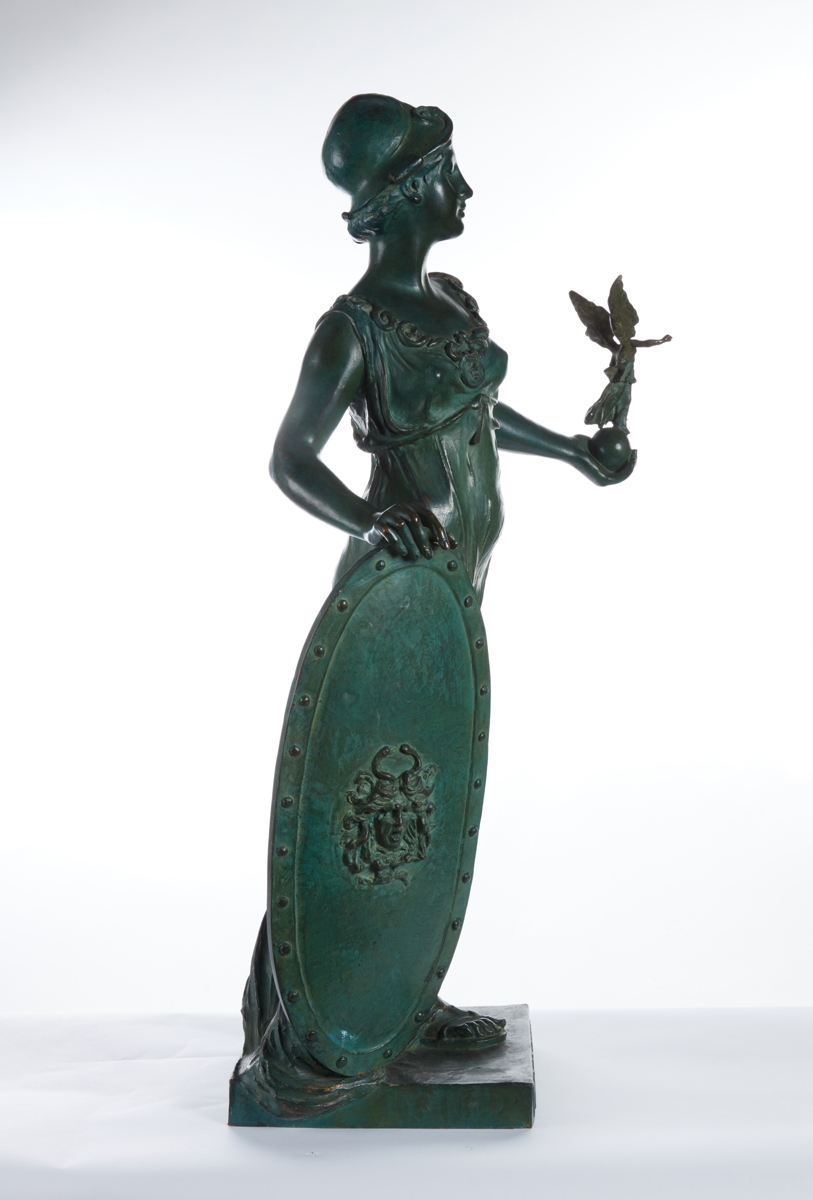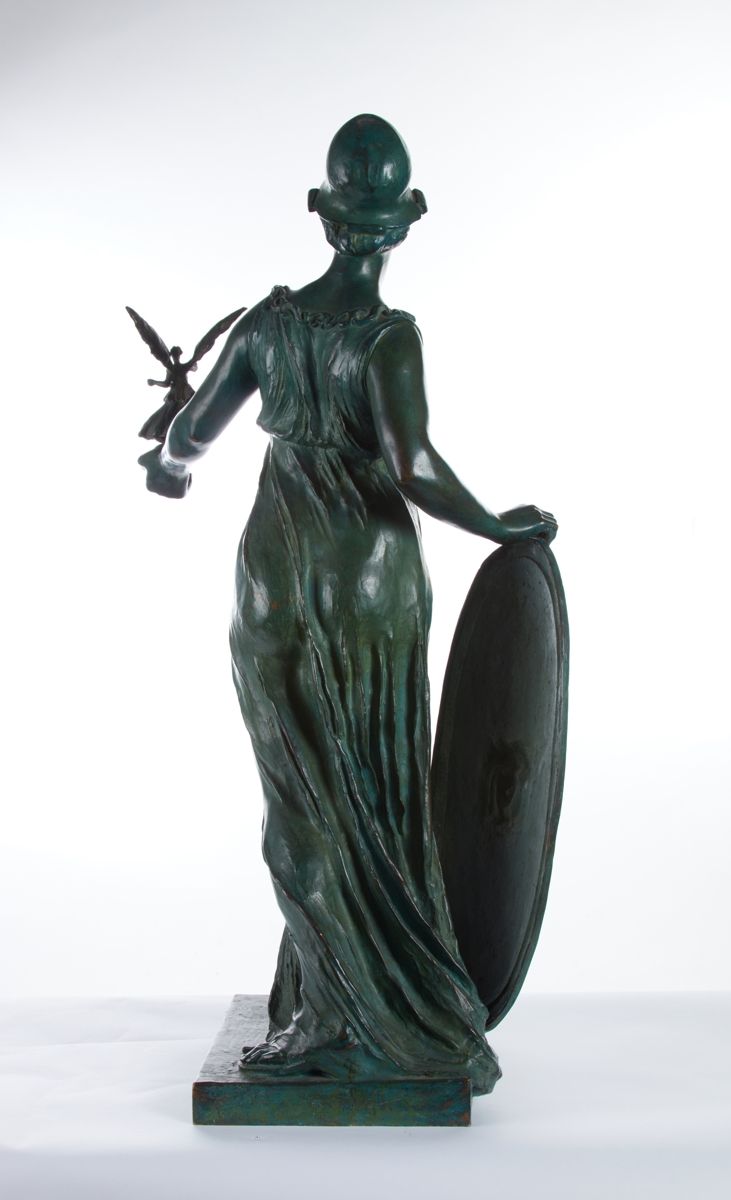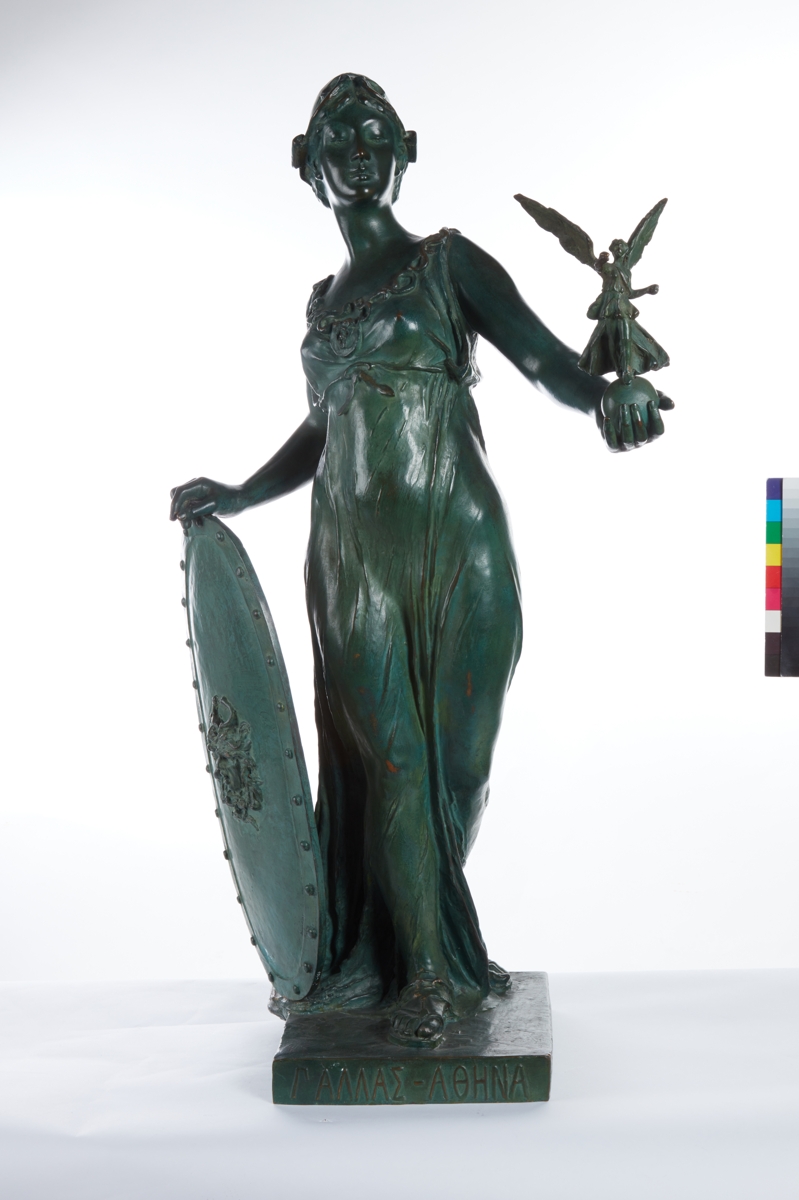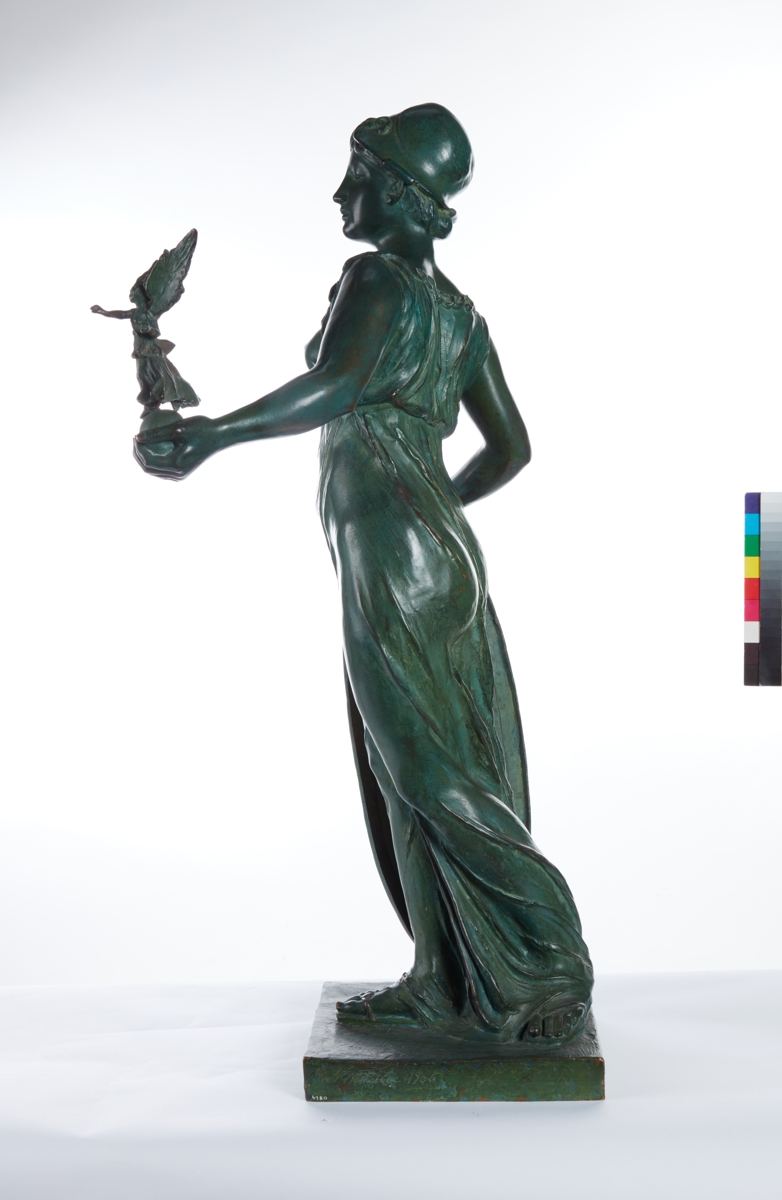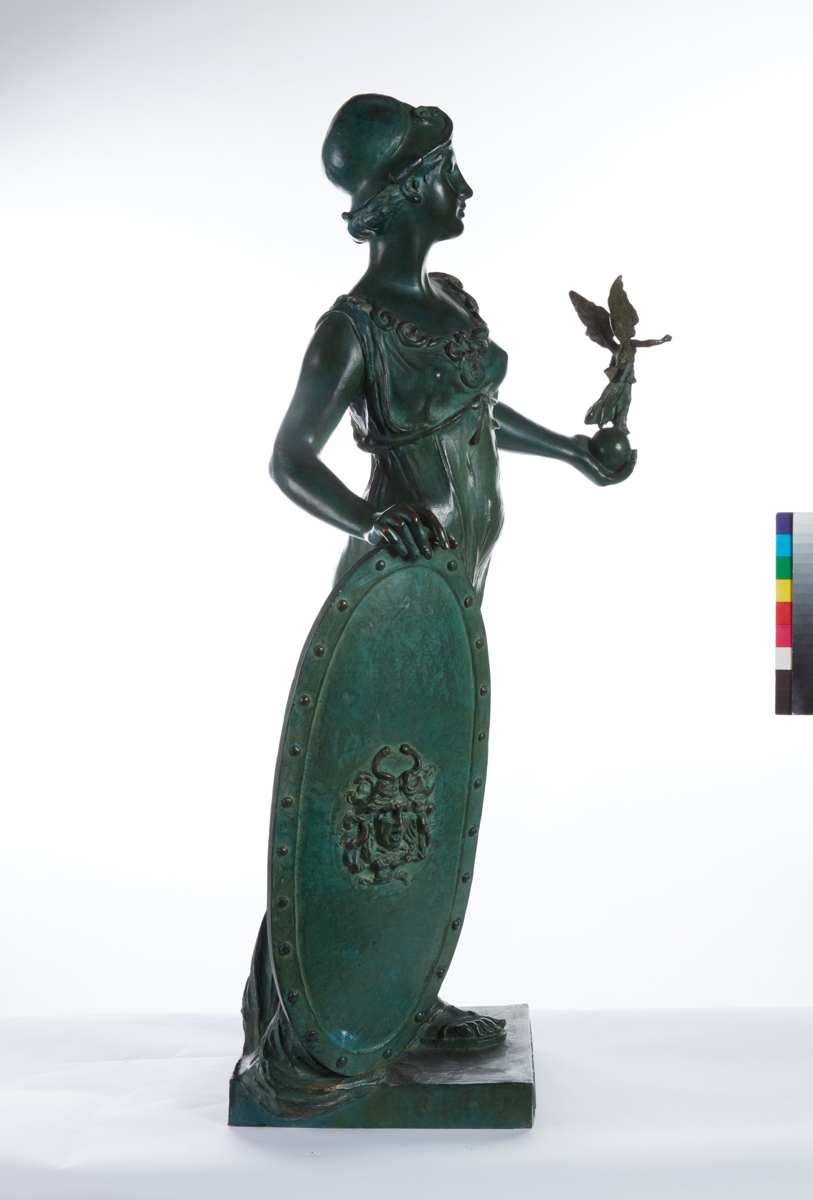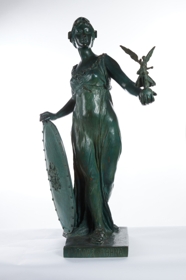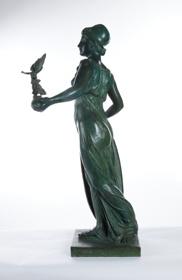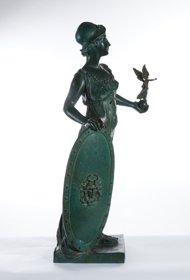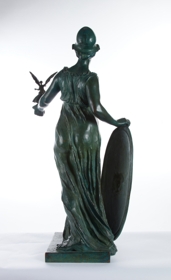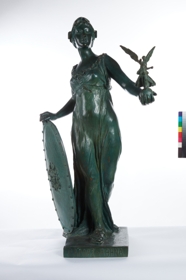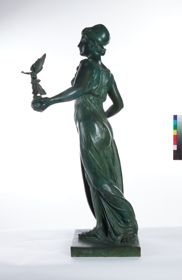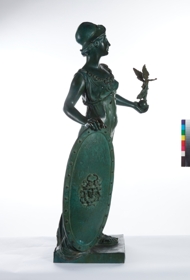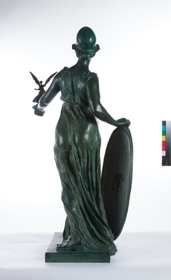At the IOC session in The Hague in 1907, the Secretary General of the IOC, Count Brunetta d'Usseaux, presented the IOC with a statuette representing Pallas Athena to be awarded to the country that achieved the most victories at the Olympic Games. However, there was no consensus on the scoring system, and it was decided not to use this trophy for that purpose. Instead, the work commissioned by Brunetta d'Usseaux was intended to serve as a challenge trophy for rowing in the eight-oared discipline.
Brunetta d'Usseaux commissioned this scultpure from American artist Alice Nye-Wetherbee. In the Olympic Review of May 1907, Pierre de Coubertin provided a description of the work: "The statue is charming. Although a feminine work, it is neither delicate nor sentimental [sic]. This Pallas is both energetic and gentle. Above all, one senses that she is resolutely modern and that, without rejecting the heavy heritage represented by her traditional shield, she adapts perfectly to the conditions of modern life. From an artistic point of view, her silhouette blends modern style with ancient inspiration in the most original way."
As a wealthy artist living in Paris, Alice Nye-Wetherbee was first known as the wife of Swiss artist Jean Schopfer, a tennis champion known as Claude Anet, whom she divorced in 1903. She married in 1908 Hungarian explorator Rodoph Festetics Count of Tolna. The only reference about her artistic activity comes from the American Art Annual Vol. 7 (1909-1910), which mentions that she was a pupil of Antonin Larroux (1859-1937).
